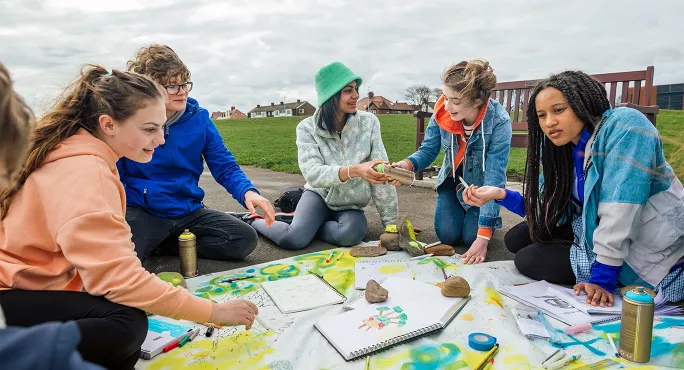Most secondary schools in Scotland report seldom using their grounds during teaching time for learning other than PE.
This is one of many findings in a report from Learning through Landscapes, the national school grounds charity, which also shows that 15 per cent of schools have lost outdoor space in recent years.
However, there are also some positive findings in the report, including that four in five schools have improved their grounds over the past three years.
Many school grounds ‘stagnant’
“Our report is showing that many school grounds are ‘stagnant’, and this is particularly concerning in the face of a rapidly changing world,” said Matt Robinson, Learning through Landscapes’ chief operations officer and Scotland director.
More than half of secondaries use their grounds “never”, “rarely” or “not very often” during teaching time (other than for PE), as is the case for a third of both primary and special schools.
More than 1,000 schools across all 32 local authority areas in Scotland participated in the survey, which replicated a similar study conducted 20 years ago.
The 2025 survey, led by Professor John McKendrick - Scotland’s commissioner for fair access - and also involving NatureScot and Play Scotland, also shows that climate change is already affecting school grounds, given reports of increased flooding, overheating and high winds that are restricting use.
The variation in school grounds’ condition is also a concern, says Learning through Landscapes, with some “fitting the description of ‘tarmac and mown grass deserts’”.
While many schools are trying to improve their grounds, “progress remains fragmented”, says the report. Learning through Landscapes points to factors including costs, issues around landowner permission for changes, and the lack of a national school-grounds strategy in Scotland.
Compared with 2005, many schools now have more features and area types in their schools grounds, while more schools report using their grounds during teaching time.
However, the report says that “in many other ways, there has been little change since 2005, with nearly half of schools seeing their grounds as offering little in terms of spaces for play and leisure”. Also grounds are “less of a priority in school improvements plans of 2025” than was the case in 2005.
The report adds: “Despite strong intentions, many schools are not fully utilising their grounds for teaching and learning, and very few are using them for staff professional development. Increasingly, schools are turning to off-site facilities for nature-based learning, play and sports.”
Mr Robinson said: “Learning through Landscapes will now be approaching the Scottish government to convene a school grounds roundtable. The complete data will be released later in the summer. This will be a pivotal moment for partners and stakeholders to robustly discuss the issues raised by this report.”
Here is some of the good and bad news in the report on school grounds:
Negative findings
- 16 per cent of secondaries and 15 per cent of primaries say they have lost school grounds to building development in the past 20 years.
- 32 per cent of special schools say their school grounds are “too small”.
- 38 per cent of schools have fewer than five trees.
- 35 per cent of secondaries report their grounds are never used for staff development/professional learning.
- 36 per cent of secondaries have concerns about pupil safety in their car parks.
- 11 per cent of primaries say their school grounds are open for use by the wider community outside school hours.
Positive findings
- 78 per cent of primary schools report that their grounds are being used to support learning in numeracy and maths.
- 82 per cent of secondaries’ grounds are being used for science lessons.
- 94 per cent of secondaries have a bike rack/storage area, up from 55 per cent in 2005.
- 49 per cent of primaries say all their pupils are physically active in the playground at breaktime in 2025, up from 31 per cent in 2005.
- 50 per cent of secondaries have a polytunnel or greenhouse for growing food.
You can now get the UK’s most-trusted source of education news in a mobile app. Get Tes magazine on iOS and on Android





